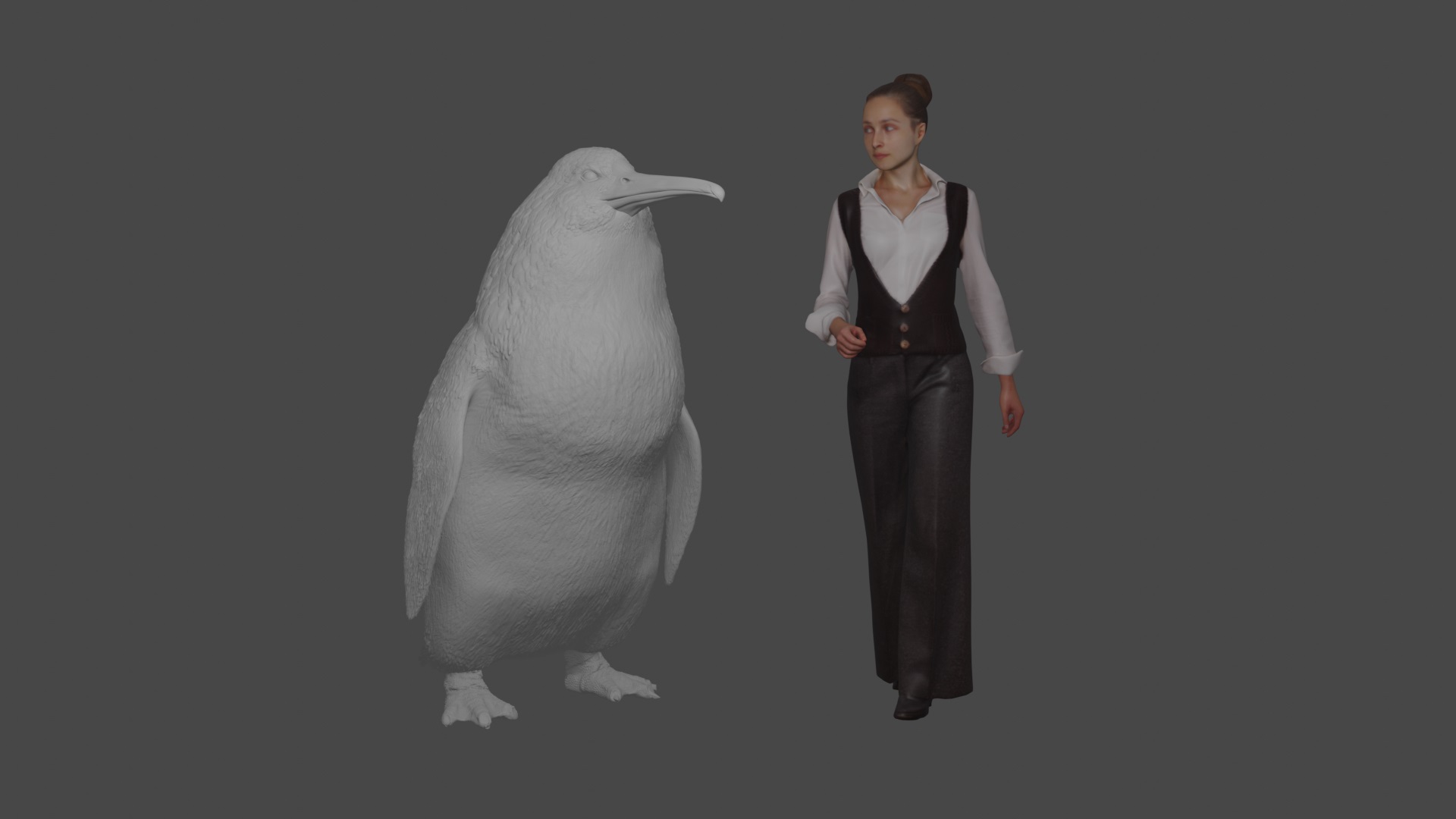Media Release
From: Canterbury MuseumMonster Penguin Find in Waipara, North Canterbury
Gigantic Prehistoric Penguin had Close Antarctic Relative
A new species of giant penguin – about 1.6 metres tall – has been identified from fossils found in Waipara, North Canterbury.
The discovery of Crossvallia waiparensis, a monster penguin from the Paleocene Epoch (between 66 and 56 million years ago), adds to the list of gigantic, but extinct, New Zealand fauna. These include the world’s largest parrot, a giant eagle, giant burrowing bat, the moa and other giant penguins.
C. waiparensis is one of the world’s oldest known penguin species and also one of the largest – taller even than today’s 1.2 metre Emperor Penguin – and weighing up to 70 to 80 kg. (See 3D model here)
Amateur palaeontologist Leigh Love found the bones at the Waipara Greensand fossil site in North Canterbury in 2018. Local fossil preparator Al Mannering readied them for study and helped describe them.
A team comprising Canterbury Museum curators Dr Paul Scofield and Dr Vanesa De Pietri, and Dr Gerald Mayr of Senckenberg Natural History Museum in Frankfurt, Germany, analysed the bones and concluded they belonged to a previously unknown penguin species.
In a paper published this week in Alcheringa: An Australasian Journal of Palaeontology, the team concluded that the closest known relative of C. waiparensis is a fellow Paleocene species Crossvallia unienwillia, which was identified from a fossilised partial skeleton found in the Cross Valley in Antarctica in 2000.
Canterbury Museum Senior Curator Natural History Dr Paul Scofield says finding closely related birds in New Zealand and Antarctica shows our close connection to the icy continent.
“When the Crossvallia species were alive, New Zealand and Antarctica were very different from today – Antarctica was covered in forest and both had much warmer climates,” he says.
The leg bones of both Crossvallia penguins suggest their feet played a greater role in swimming than those of modern penguins, or that they hadn’t yet adapted to standing upright like modern penguins.
C. waiparensis is the fifth ancient penguin species described from fossils uncovered at the Waipara Greensand site.
Dr Gerald Mayr says the Waipara Greensand is arguably the world’s most significant site for penguin fossils from the Paleocene Epoch. “The fossils discovered there have made our understanding of penguin evolution a whole lot clearer,” he says. “There’s more to come, too – more fossils which we think represent new species are still awaiting description.”
Dr Vanesa De Pietri, Canterbury Museum Research Curator Natural History, says discovering a second giant penguin from the Paleocene Epoch is further evidence that early penguins were huge. “It further reinforces our theory that penguins attained a giant size very early in their evolution,” she says.
The fossils of several giant species, including C. waiparensis, will be displayed in a new exhibition about prehistoric New Zealand at Canterbury Museum later this year.


